
How to Use BUCK CONVERTER: Examples, Pinouts, and Specs
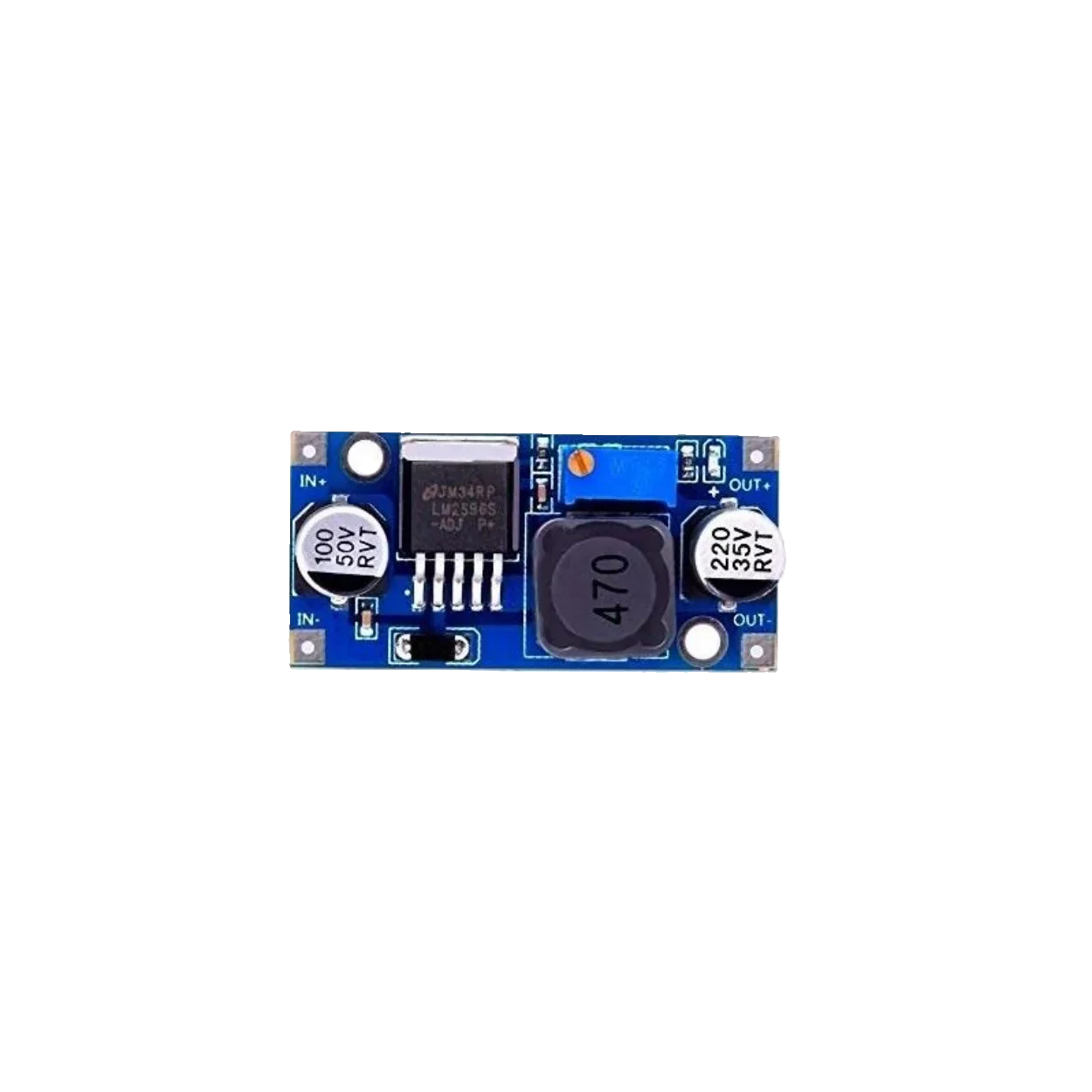
 Design with BUCK CONVERTER in Cirkit Designer
Design with BUCK CONVERTER in Cirkit DesignerIntroduction
A buck converter is a type of DC-DC converter that steps down voltage while stepping up current. It achieves this by using a combination of a switching element (such as a transistor), a diode, an inductor, and a capacitor. Buck converters are highly efficient and are widely used in applications where a stable, lower voltage is required from a higher voltage source.
Explore Projects Built with BUCK CONVERTER
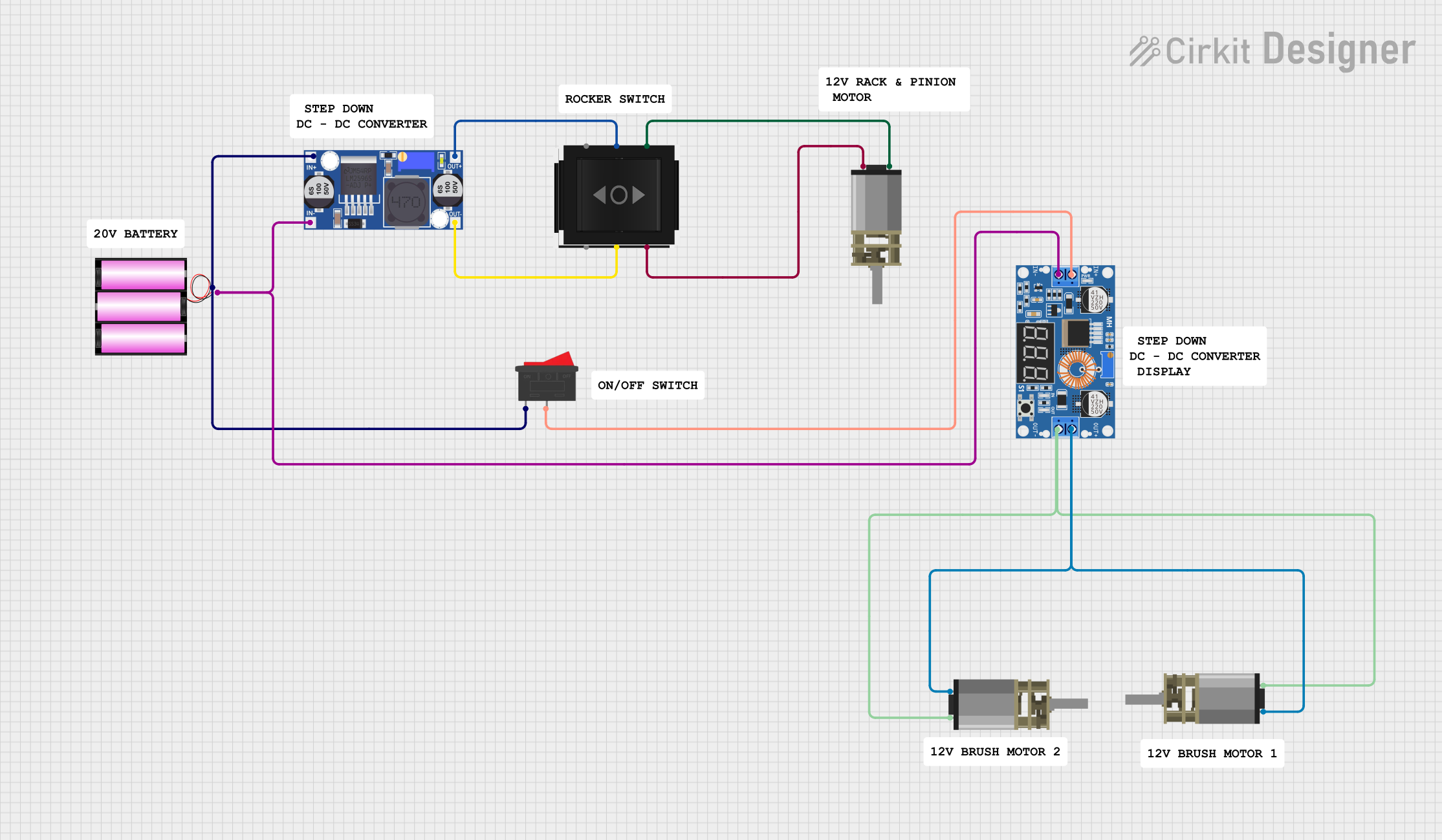
 Open Project in Cirkit Designer
Open Project in Cirkit Designer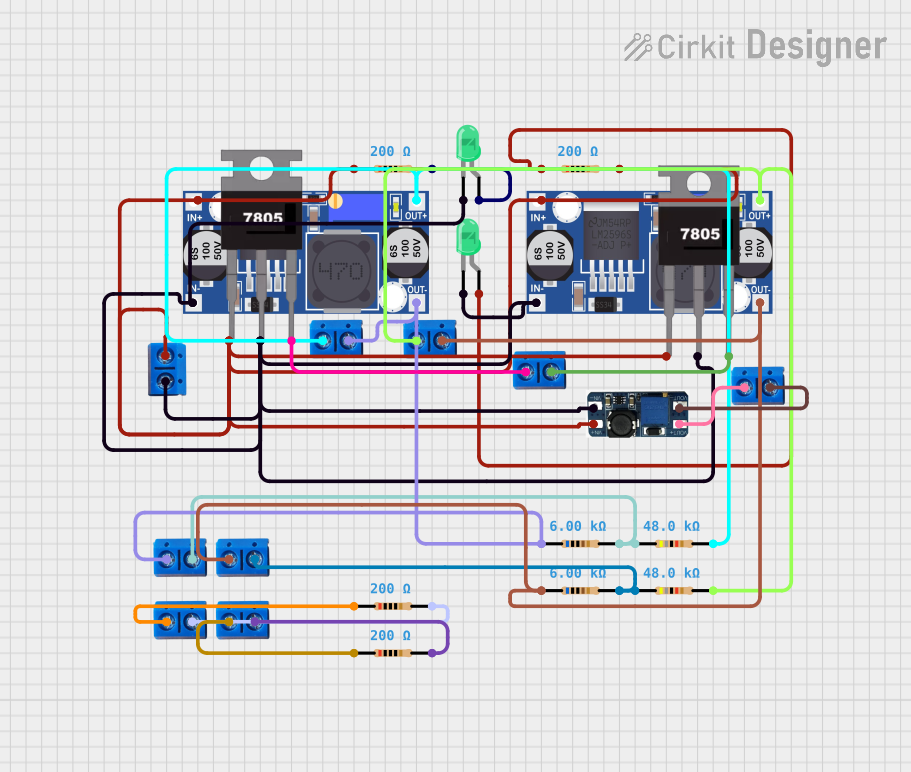
 Open Project in Cirkit Designer
Open Project in Cirkit Designer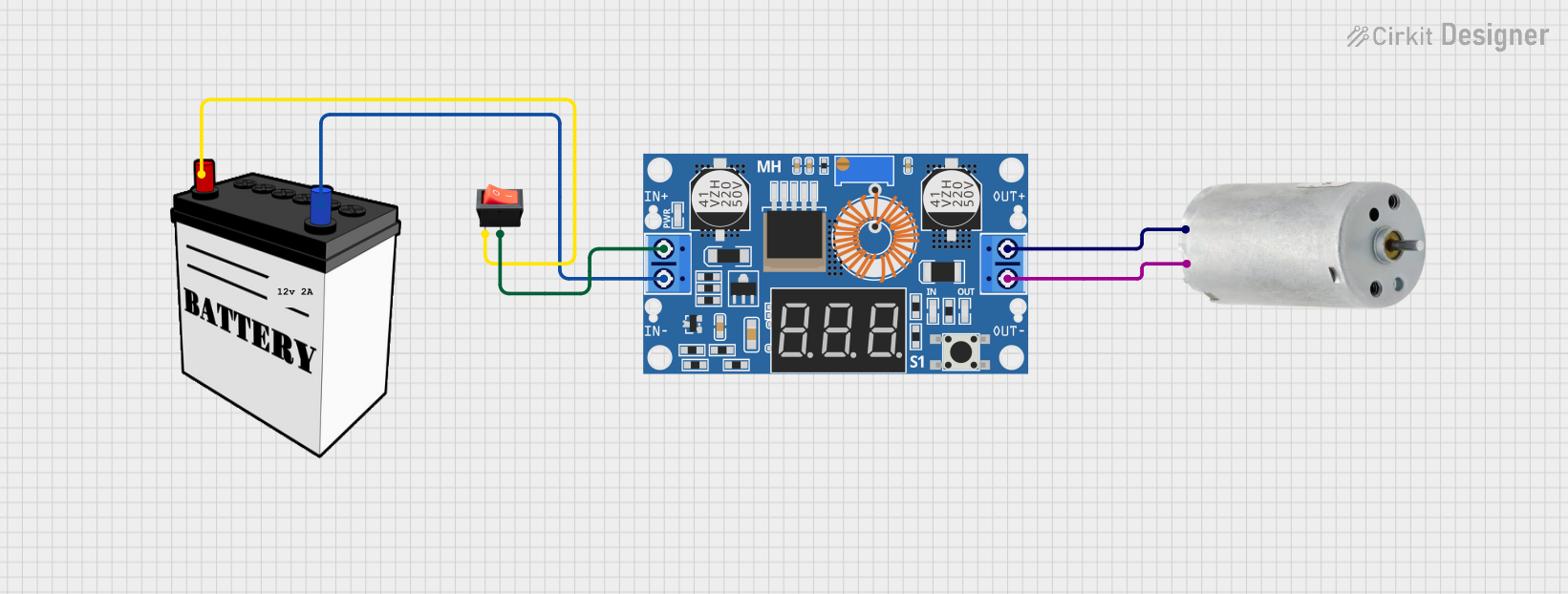
 Open Project in Cirkit Designer
Open Project in Cirkit Designer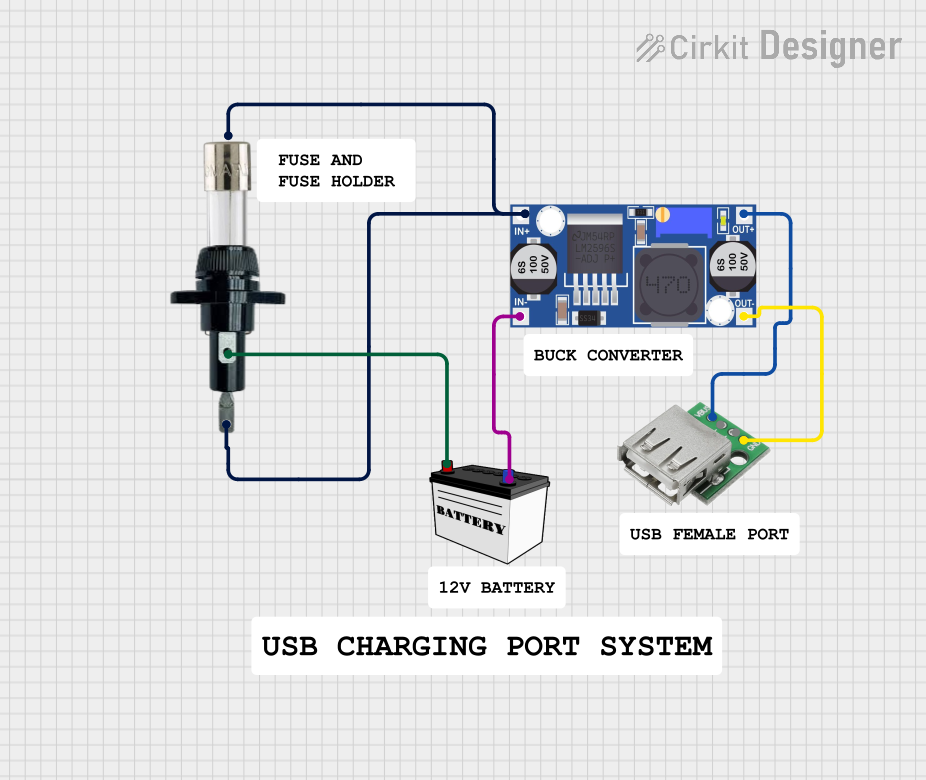
 Open Project in Cirkit Designer
Open Project in Cirkit DesignerExplore Projects Built with BUCK CONVERTER

 Open Project in Cirkit Designer
Open Project in Cirkit Designer
 Open Project in Cirkit Designer
Open Project in Cirkit Designer
 Open Project in Cirkit Designer
Open Project in Cirkit Designer
 Open Project in Cirkit Designer
Open Project in Cirkit DesignerCommon Applications and Use Cases
- Powering microcontrollers and low-voltage devices from higher voltage sources
- Battery-powered systems to regulate voltage levels
- Voltage regulation in renewable energy systems (e.g., solar panels)
- Automotive electronics to step down 12V to lower voltages
- LED drivers and portable electronic devices
Technical Specifications
Below are the general technical specifications for a typical buck converter module. Specifications may vary depending on the specific model.
| Parameter | Value |
|---|---|
| Input Voltage Range | 4.5V to 40V |
| Output Voltage Range | 1.25V to 37V (adjustable via potentiometer) |
| Output Current | Up to 3A (depending on the model) |
| Efficiency | Up to 92% |
| Switching Frequency | 150 kHz |
| Operating Temperature | -40°C to +85°C |
Pin Configuration and Descriptions
| Pin Name | Description |
|---|---|
| VIN | Input voltage pin. Connect to the higher voltage source. |
| GND | Ground pin. Connect to the ground of the circuit. |
| VOUT | Output voltage pin. Provides the stepped-down voltage. |
| ADJ (optional) | Adjustment pin. Used to set the output voltage (if available). |
Usage Instructions
How to Use the Buck Converter in a Circuit
Connect the Input Voltage (VIN):
- Connect the positive terminal of the input voltage source to the
VINpin. - Connect the negative terminal of the input voltage source to the
GNDpin.
- Connect the positive terminal of the input voltage source to the
Set the Output Voltage:
- If the buck converter has an adjustable output, use the onboard potentiometer to set the desired output voltage.
- Measure the output voltage at the
VOUTpin using a multimeter while adjusting the potentiometer.
Connect the Load:
- Connect the positive terminal of the load to the
VOUTpin. - Connect the negative terminal of the load to the
GNDpin.
- Connect the positive terminal of the load to the
Power On:
- Turn on the input voltage source. The buck converter will step down the input voltage to the desired output voltage.
Important Considerations and Best Practices
- Input Voltage Range: Ensure the input voltage is within the specified range of the buck converter module.
- Output Current Limit: Do not exceed the maximum output current rating to avoid overheating or damage.
- Heat Dissipation: For high-power applications, consider adding a heatsink to the module to improve heat dissipation.
- Ripple and Noise: Use additional capacitors at the input and output to reduce voltage ripple and noise.
- Polarity: Double-check the polarity of the connections to avoid damaging the module.
Example: Using a Buck Converter with an Arduino UNO
Below is an example of how to use a buck converter to power an Arduino UNO from a 12V source.
Circuit Connections
- Connect the 12V source to the
VINandGNDpins of the buck converter. - Adjust the output voltage of the buck converter to 5V using the potentiometer.
- Connect the
VOUTpin of the buck converter to the5Vpin of the Arduino UNO. - Connect the
GNDpin of the buck converter to theGNDpin of the Arduino UNO.
Arduino Code Example
// Example code to blink an LED connected to pin 13 of the Arduino UNO
// Ensure the Arduino is powered via the buck converter (5V output).
void setup() {
pinMode(13, OUTPUT); // Set pin 13 as an output pin
}
void loop() {
digitalWrite(13, HIGH); // Turn the LED on
delay(1000); // Wait for 1 second
digitalWrite(13, LOW); // Turn the LED off
delay(1000); // Wait for 1 second
}
Troubleshooting and FAQs
Common Issues and Solutions
No Output Voltage:
- Cause: Incorrect wiring or polarity.
- Solution: Double-check all connections and ensure the input voltage is within the specified range.
Output Voltage is Incorrect:
- Cause: Potentiometer not adjusted properly.
- Solution: Use a multimeter to measure the output voltage and adjust the potentiometer.
Overheating:
- Cause: Exceeding the maximum current rating or insufficient heat dissipation.
- Solution: Reduce the load current or add a heatsink to the module.
High Ripple or Noise:
- Cause: Insufficient filtering.
- Solution: Add additional capacitors (e.g., 100µF electrolytic and 0.1µF ceramic) at the input and output.
FAQs
Q: Can I use a buck converter to power a Raspberry Pi?
A: Yes, but ensure the output voltage is set to 5V and the current rating is sufficient (at least 2.5A for most Raspberry Pi models).Q: Can I use a buck converter to step down AC voltage?
A: No, buck converters are designed for DC input only. Use a transformer and rectifier for AC to DC conversion.Q: How do I know if the buck converter is overloaded?
A: Symptoms of overloading include overheating, voltage drop, or the module shutting down. Reduce the load to resolve the issue.